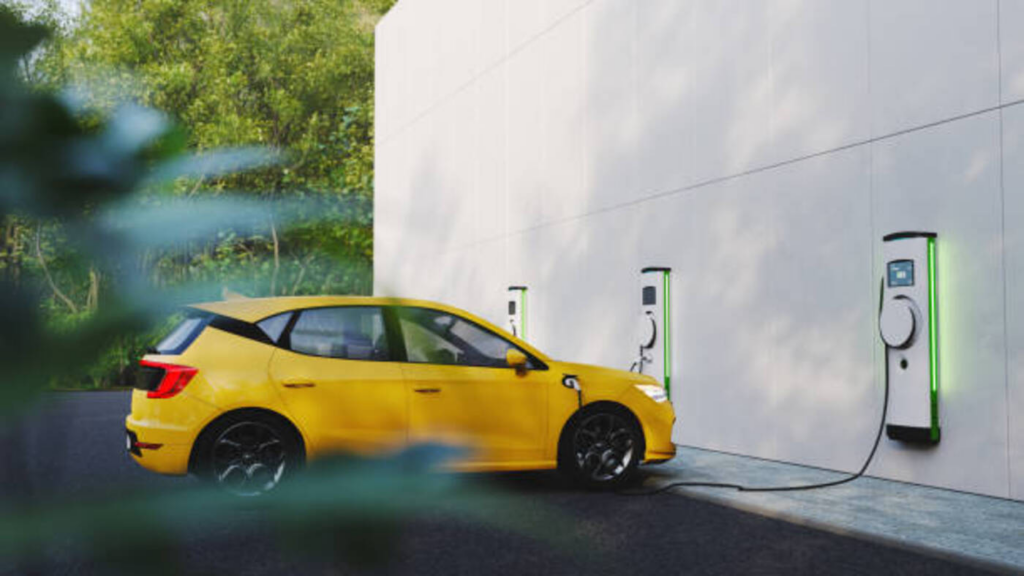Electric vehicles (EVs) are gaining popularity daily because of concerns about pollution and other factors. The future is bright for these vehicles because of urbanization and high mobility demand.
EVs are ideal for most road users because they meet climatic goals and improve air quality. Customers also opt for low-emission commute alternatives instead of fossil fuel vehicles that endanger our planet.
Although EVs face many challenges, there’s hope these cars are here to stay. Their batteries continue to evolve, and the EV industry is on the front line doing the market campaign. Additionally, governments around the globe encourage the electric car industry by subsidizing and regulating its manufacturer.

The History of Electric Cars
Electric cars don’t have a specific inventor or country of origin. It was a journey of baby steps from a battery-powered vehicle to an electric one. In the 1800s, the first EV stepped on the road. The first countries to innovate on electric vehicles are the United States, Hungary and Netherlands.
It all started with a blacksmith from Vermont toying with a concept of a car powered by a battery, which gave birth to the first electric car. A British investor Robert Anderson developed an electric carriage then a half-century later, a French investor built the first electric car.
In 1980 William Morrison placed the US on the electric cars map with his six passengers’ vehicles with a top speed of 14 miles per hour. Although his car was more of an electrified wagon, it paved the way for the interest in developing electric vehicles.
It was some years after that different car makers started manufacturing electric vehicles.
What Makes Electric Vehicles’ Future Bright?
Although they were the rise and fall of electric cars, they proved never to give up. Here are the main reasons that made the electric vehicles demand hiked recently
Customer Demand
In the past decade, the demand for EVs has escalated due to increased customer interest. Customers’ interests include improved battery capacity, environmental concerns, cost of living, and superb vehicle choice.
Most drivers buying EVs are using them to protect the environment. Most people are learning the effects of carbon print on the environment and shifting to electric vehicles because of their environmental impact.
Unlike in the past, consumers now can choose from a wide range of EVs since manufacturers continue introducing a wider variety of electric vehicles. Whether you want a small or large vehicle, they are available. Recently you can get trucks and SUVs in the market, unlike before, when sedans and hatchbacks were only available.
You no longer dread running out of power with the newly evolved EVs. The batteries are improved, and you can drive safely to the following charging location. The improved EVs can go up to 234 miles before the next recharge. Technology is still advancing, and it will be better and may find them in racing sports. You can read more about these sports and how to bet on them here – casinoudendansklicens.org.
Additionally, by using EVs, most people save money because there’s no additional cost like fueling. The cost of EVs is expected to drop more, making them more affordable and maintenance cost-saving than fueled cars.

Government Policies
Over a decade, the government has supported policies for EVs, resulting in the expansion of electric cars. The government aims to use the vehicles for climate change combat. That’s why some countries have adopted policy support for model expansions of electric vehicles to medium and heavy-duty cars.
The governments have adopted purchase subsidies and registration tax rebates to reduce the price gap with conventional vehicles. The cities have also encouraged sales of EVs in urban areas. They have achieved this by creating Strategic charging infrastructure, banning the selling of new gas-powered cars, and placing zero emission zones.
Automakers Committing to Developing EVs
Different automakers have shared strategies they will use to speed up the making of electric trucks and cars. Ev’s manufacturers plan to roll out new electric models in the next ten years. They are targeting higher EVs sales, thus ending fuel-powered vehicle production. These companies have invested billions of dollars to achieve the electrification goals, including developing new manufacturing plants in the next decade.
In order to reach the electric vehicles electrification goal, there will be the birth of new occupations like
Occupations Available in Electric Cars Transition
The electrification process is expected to open new doors in designing and developing EVs, battery production to power vehicles, and charging infrastructure. Let’s check several occupations around the electric vehicle transition.
- The designing and developing of electric cars
The design and development sector will employ people in engineering and computer occupations. The computer experts’ work is to create and support computer applications while engineers will design and develop the vehicle.
An electric car will require engineers from different fields, such as engineers designing mechanical parts such as car breaks. On the other hand, others will work on developing safety systems like cameras and sensors. Other types of engineers will specialize in battery technology.
The electrical engineers are responsible for designing EVs control systems like user infotainment systems for these vehicles.
- Battery Manufacturing
As automakers work to produce more electric vehicles, new battery manufacturing plants will pop up due to the high demand for EV batteries. These plants will open new job vacancies in battery assembling, production, supervisor, and managerial posts. The battery plants will also employ electromechanical assemblers, fabricators, and various assemblers.
- Development and Maintenance of Charging Network
As the number of electric vehicles is rising, there is a demand for more charging infrastructure. Since drivers can charge EVs from home, most of these charging systems will be installed at their residences. There will be a need for a public charging network and one charger for every 10 -15 electric vehicles.
Conclusion
Since introducing electric cars about a century ago, their popularity has risen by the day. All electric, hybrid, and plug-in electric vehicles are in demand, and their demand will continue to grow. The EVs prices will drop, and most customers will use them and save money they use at the pump.
